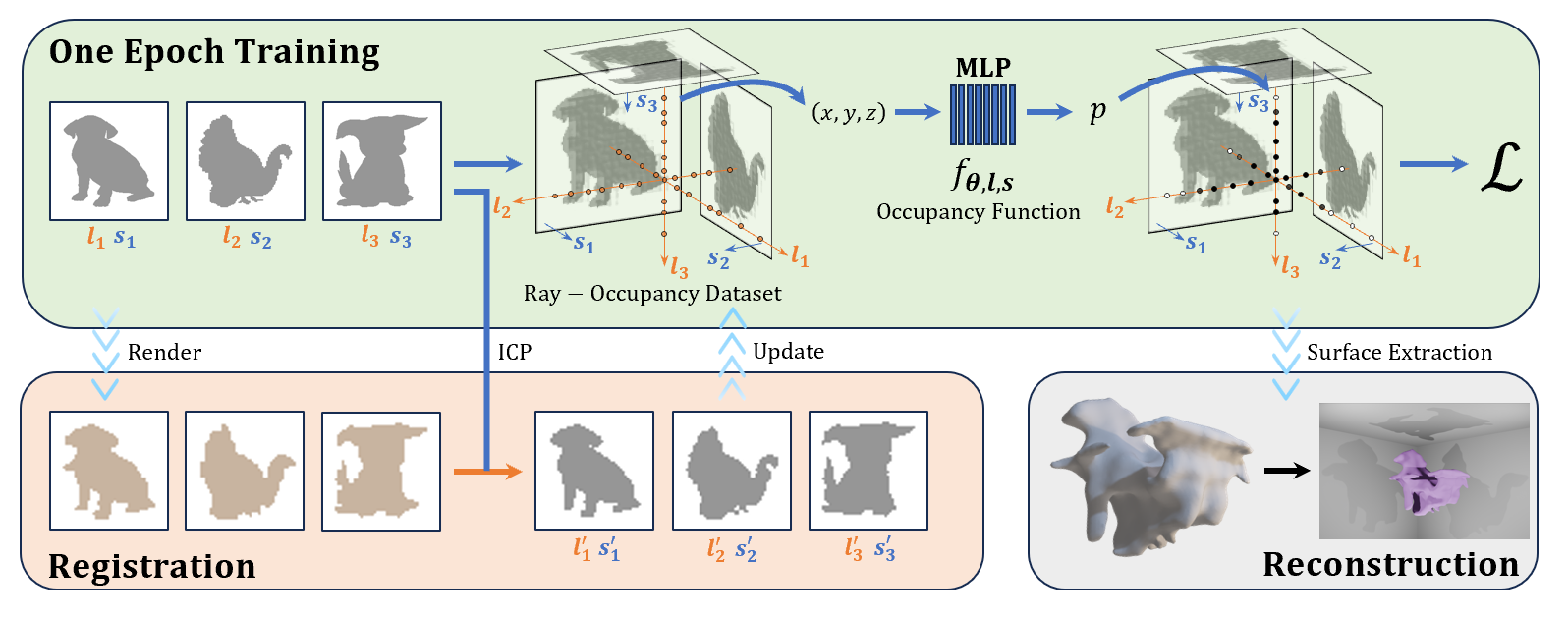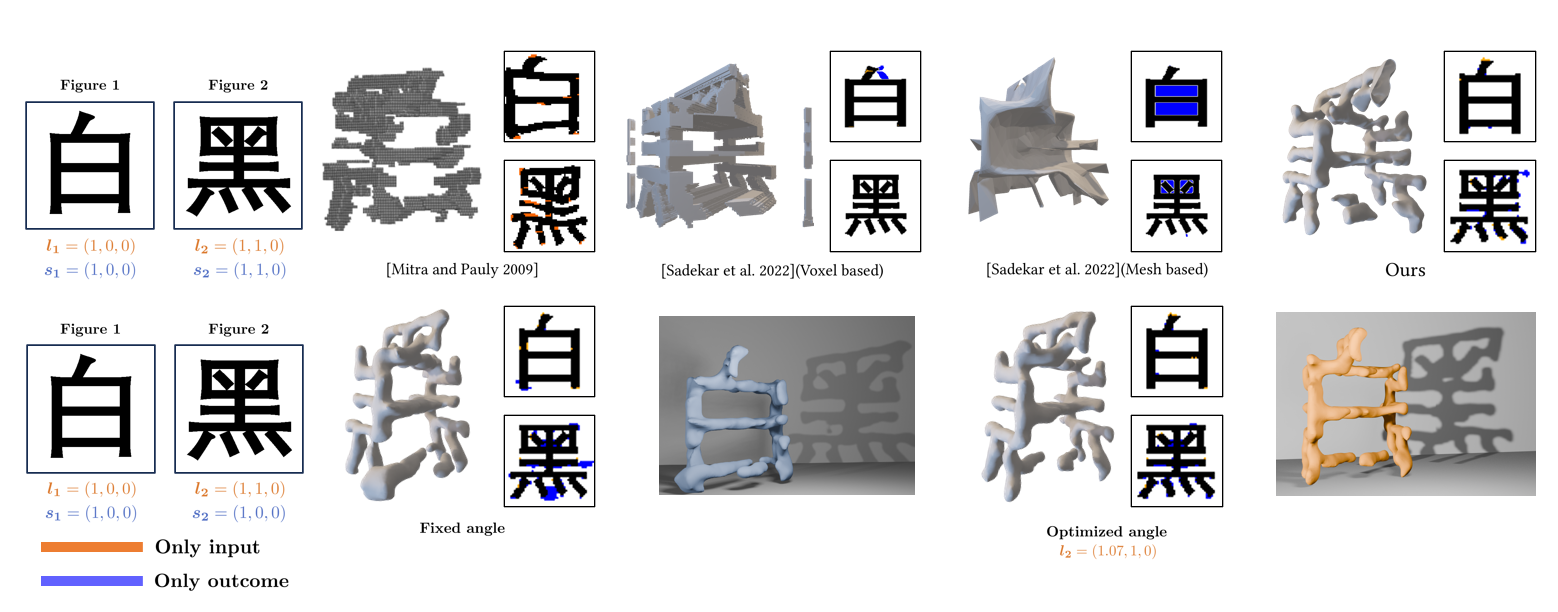
Shadow art is a captivating form of sculptural expression, where the projection of a sculpture in a specific direction reveals a desired shape with high accuracy. In this work, we introduce Neural Shadow Art, which leverages implicit function representations to expand the possibilities of shadow art. Our method provides a more flexible framework that allows projections to match input binary images under various lighting directions and screen orientations, without requiring the light source to be perpendicular to the screen. Unlike previous approaches, our method permits rigid transformations of the projected geometry relative to the input binary image. By optimizing lighting directions and screen orientations simultaneously through the implicit representation of 3D models, we ensure the projection closely resembles the target image. Additionally, like prior works, our method accommodates specific angular constraints, allowing users to fix the projection angle when necessary. Beyond its artistic significance, our approach proves valuable for industrial applications, demonstrating lower material usage and enhanced geometric smoothness. This capability avoids oversimplified results, such as the intersection of cylindrical volumes formed by light rays and the projection image. Furthermore, our approach excels in generating sculptures with complex topologies, surpassing previous methods and achieving sculptural effects akin to those in contemporary art.

Overall workflow of our method. (a) In each epoch, we first generate the Ray-Occupancy dataset based on the input, compute the loss, and update the occupancy function using backpropagation. (b) At the end of each epoch, the result is rendered, and the input image is updated by performing ICP between the rendered result and the input image. Additionally, \(\boldsymbol{l_i}\) and \(\boldsymbol{s_i}\) are updated for the next epoch. (c) The surface is extracted and simulated using the implicit function.
We first compare our Neural Shadow Art with previous projects. We first compare our Neural Shadow Art with previous projects, highlighting the advantages of our model in terms of projection accuracy, volume, and geometric properties.

Then, we demonstrate how our model offers new possibilities for artistic creation for shadow art. The result in the second row cannot be obtained by previous models.

Some fabrication results are also shown.
